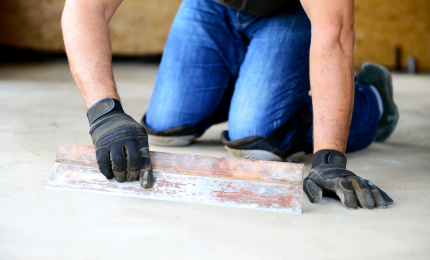
In the realm of automotive maintenance and repair, having a reliable and sturdy lifting system is paramount. Two-post car lifts are commonly used in garages and workshops for tasks ranging from routine inspections to complex repairs. However, ensuring the stability and safety of these lifts begins with the foundation they’re anchored to – the concrete floor. In this article, we’ll delve into the importance of concrete thickness for two-post car lifts and how to determine the appropriate specifications for a secure setup.
Understanding Load Requirements
Before we dive into concrete thickness, it’s essential to comprehend the load requirements of your two-post car lift. These specifications typically include the lift’s maximum capacity, which can range from a few thousand pounds to over ten thousand pounds, depending on the model. The load capacity directly influences the forces exerted on the lift’s anchoring points and, subsequently, the concrete foundation.
Factors Affecting Concrete Thickness
Several factors influence the required thickness of the concrete foundation for a two-post car lift:
- Lift Capacity: As mentioned earlier, the lift’s maximum capacity dictates the magnitude of the forces transmitted to the concrete floor. Heavier vehicles demand thicker concrete to withstand the increased load.
- Force Canada™ Recommendations: We provide guidelines and specifications for the installation of their two-post car lifts, including concrete thickness requirements. Adhering to these recommendations ensures compliance with safety standards and warranty conditions.
- Local Building Codes: Building codes and regulations may stipulate minimum concrete thickness for various types of equipment installations, including automotive lifts. It’s crucial to consult local authorities or building inspectors to ensure compliance with these standards.
- Soil Conditions: The soil composition and bearing capacity of the ground beneath the concrete slab influence its load-bearing capacity. In areas with poor soil quality or high moisture content, thicker concrete may be necessary to distribute the load effectively and prevent settlement or cracking.
Calculating Concrete Thickness
While our recommendation serve as a baseline, calculating the specific concrete thickness for your two-post car lift installation provides a customized solution tailored to your requirements. Here’s a simplified approach to determine the appropriate thickness:
- Identify Load Distribution Points: Determine the distance between the two lifting columns and their dimensions. This information helps determine the area over which the load is distributed.
- Calculate Load Distribution Area: Multiply the distance between the columns by their width to obtain the total area subjected to load.
- Determine Load Distribution Pressure: Divide the lift’s maximum capacity by the load distribution area calculated in the previous step. This yields the pressure exerted on the concrete floor.
- Consult Engineering Tables: Refer to engineering tables or consult structural engineering professionals to correlate the calculated pressure with the recommended concrete thickness based on the specific load-bearing capacity of the concrete mix.
- Consider Reinforcement Options: In cases where the calculated thickness exceeds practical limits or when additional reinforcement is necessary, options such as rebar or fiber reinforcement can enhance the structural integrity of the concrete slab.
Conclusion
Ensuring the safety and stability of a two-post car lift begins with a solid foundation, quite literally. By understanding the factors influencing concrete thickness and following appropriate calculation methods, you can establish a reliable base for your lift, minimizing the risk of accidents and structural failures. Prioritizing safety in lift installations not only safeguards personnel and equipment but also enhances productivity and efficiency in automotive maintenance operations.




Post a Comment